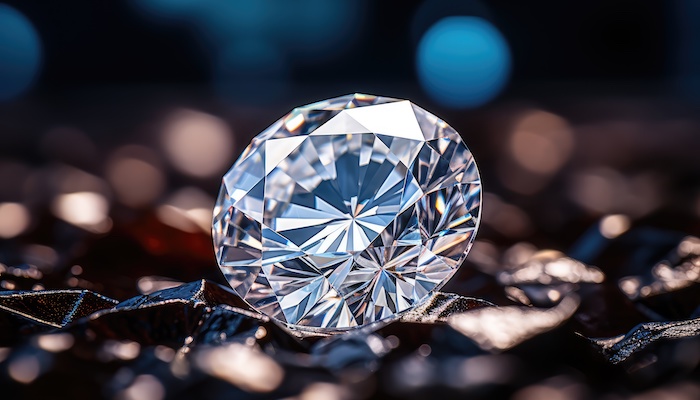The Rise of Lab Diamonds Across Cultures
Lab diamonds are gaining traction worldwide due to their ethical sourcing and environmental benefits. In many cultures, the appeal of lab diamonds is rooted in their ability to provide beautiful, high-quality gems without the ethical and environmental concerns associated with traditional diamond mining. As more people become aware of these benefits, lab diamonds are becoming an integral part of cultural practices, from engagement rings to ceremonial jewelry.
Lab Diamonds in Western Cultures
In Western cultures and lab diamonds have quickly become popular due to their ethical implications and cost-effectiveness. Many couples in countries like the United States and Canada are choosing lab-grown diamonds for engagement rings and wedding bands, aligning with values of sustainability and transparency. The growing acceptance of lab diamonds in Western culture reflects a broader trend toward ethical consumerism and a desire for more responsible choices in personal and ceremonial jewelry.
Traditional Values and Lab Diamonds in Eastern Cultures
Eastern cultures, particularly in countries like India and China, have long held diamonds in high regard for their symbolic and cultural significance. In these traditions, diamonds often represent wealth, status, and eternal love. The introduction of lab diamonds has been met with a mixture of curiosity and acceptance. While traditional values still hold strong, the ethical and environmental benefits of lab-grown diamonds are gradually influencing perceptions, leading to a growing acceptance among younger generations who are more environmentally conscious.
Lab Diamonds and African Cultures
In Africa, diamonds have been deeply intertwined with cultural and economic practices. However, the issue of conflict diamonds—those mined in war zones and sold to finance armed conflict—has raised significant ethical concerns. Lab diamonds offer a solution to these issues by providing a conflict-free alternative. As awareness of the benefits of lab-grown diamonds grows, African cultures are beginning to explore their potential. The shift towards lab made diamonds represents a move towards more ethical practices and a commitment to resolving the issues associated with traditional diamond mining.
The Role of Lab Diamonds in Middle Eastern Cultures
Middle Eastern cultures have a rich history of using gemstones in jewelry, with diamonds often symbolizing luxury and prestige. The concept of lab-grown diamonds is being integrated into this cultural context, especially as the region becomes more aware of sustainability and ethical considerations. Lab diamonds are beginning to appear in high-end jewelry collections and are being embraced by those who wish to combine traditional opulence with modern ethical standards.
Lab Diamonds in South American Traditions
In South America, where cultures have diverse practices and beliefs related to gemstones, lab diamonds are making an impact as well. While traditional gemstone practices are prevalent, there is a growing interest in lab-grown diamonds due to their ethical and environmental benefits. The adaptability of lab diamonds to various styles and settings allows them to blend seamlessly into South American jewelry traditions, offering a contemporary twist on classic designs.
The Influence of Lab Diamonds on Global Jewelry Trends
The integration of lab diamonds into various cultural practices is influencing global jewelry trends. As different cultures adopt and adapt to lab-grown diamonds, their influence is creating a shift towards more ethical and sustainable practices in the jewelry industry. This global trend is fostering greater acceptance and appreciation of lab diamonds, leading to innovations in design and new cultural expressions.
Cultural Adaptations and Innovations with Lab Diamonds
Different cultures are finding innovative ways to incorporate lab diamonds into their traditional jewelry. For example, contemporary designs inspired by traditional motifs are being created using lab-grown diamonds, allowing cultural heritage to be preserved while embracing modern values. These adaptations demonstrate the versatility of lab diamonds and their ability to complement a wide range of cultural and aesthetic preferences.
The Future of Lab Diamonds in a Global Context
As lab diamonds continue to gain acceptance around the world, their role in cultural practices is expected to expand. The future of lab diamonds involves further integration into traditional and modern practices, with a growing emphasis on ethical and sustainable values. As global awareness of the benefits of lab-grown diamonds increases, they are likely to become an even more significant part of cultural and ceremonial jewelry.
Conclusion: Embracing Lab Diamonds Across Cultures
In conclusion, lab diamonds are making a significant impact across cultures, offering a modern and ethical alternative to traditional mined diamonds. Their integration into various cultural practices reflects a global shift towards sustainability and responsibility in the jewelry industry. By embracing lab diamonds, different cultures are not only enhancing their traditional practices but also contributing to a more ethical and environmentally conscious world.

